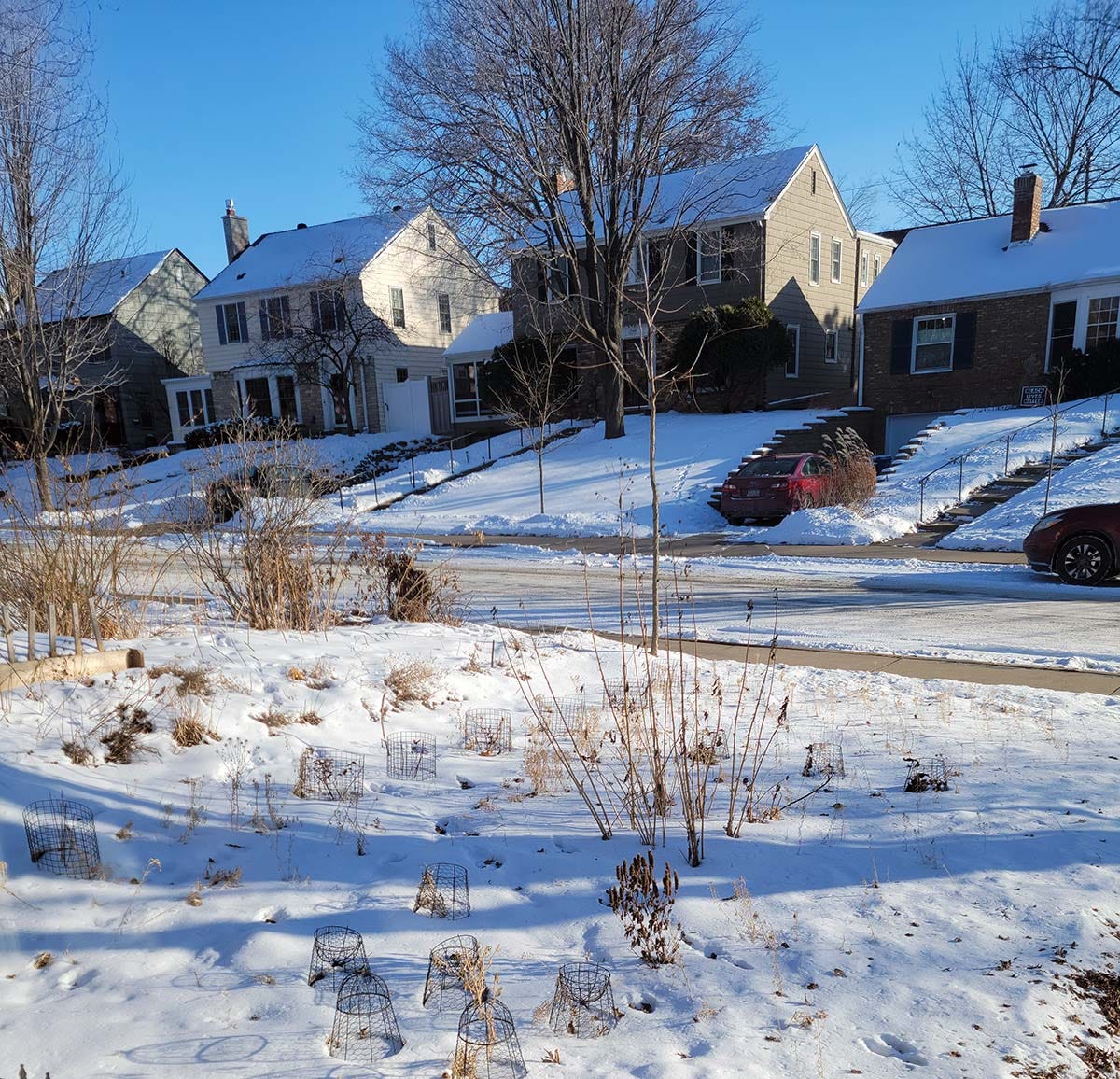As I write this, a blindingly cold winter sun fills my office with a light that does not warm. Outside it’s two degrees. Tomorrow morning it will be -20. Six inches of snow covers the world.
I look out my window and see my raised beds entombed in snow, the little metal anti-rabbit cages buried and askew like the Statue of Liberty at the end of the movie …




